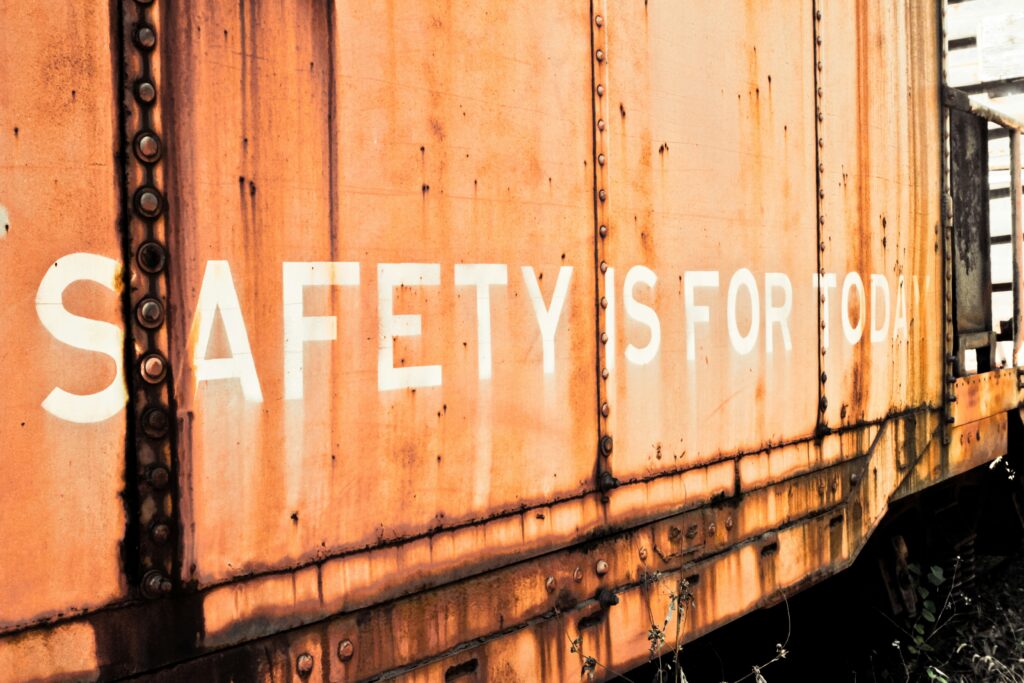Train Safety in Texas: The Quiet Danger You Can’t Ignore
Train Safety are a part of everyday life in Texas. From major freight lines to local rail crossings in small towns, the state’s vast railway system supports commerce and connects communities. However, despite their importance, trains pose a quiet but serious danger to Texas drivers and pedestrians. According to the Federal Railroad Administration, Texas consistently ranks among the top states for rail crossing accidents and fatalities. Understanding how to stay safe near train tracks is essential to prevent tragedy and ensure everyone gets home safely.
Why Train Safety Is a Bigger Issue Than Most Realize
Trains don’t stop quickly. The average freight train traveling at 55 mph can take more than a mile to come to a full stop after the emergency brakes are applied. Unlike cars, trains cannot swerve to avoid obstacles. Once a vehicle or person is on the tracks, it may already be too late.
Texas has more than 10,000 public highway-rail grade crossings, many of which are in busy urban or rural areas with limited visibility. In addition, the state has seen a rise in distracted driving incidents and an increasing number of pedestrians using tracks as shortcuts or photo ops.
Common Causes of Train Accidents in Texas
Several preventable factors contribute to the high rate of train-related incidents in Texas:
-
Ignoring crossing signals: Drivers who try to beat the train by crossing after warning lights flash often misjudge its speed.
-
Stopped vehicles on tracks: In traffic-heavy areas, some vehicles may end up trapped on the tracks due to congestion or red lights.
-
Poor visibility at crossings: In rural zones without active warning lights or gates, drivers may not see an approaching train until it’s too late.
-
Pedestrian shortcuts: People walking across train tracks illegally, especially near urban train stations, risk being hit by oncoming trains.
Texas Train Safety Laws
Texas law requires drivers to stop no less than 15 feet and no more than 50 feet from the nearest rail at a crossing when:
-
A signal device is flashing.
-
A gate is down or being lowered.
-
A train is visible and approaching.
-
A train sounds a warning signal and is close enough to pose a hazard.
Violating these laws can lead to hefty fines—and far worse consequences. Motorists should remember that it’s not just illegal to go around lowered gates; it’s potentially deadly.
Key Train Safety Tips for Drivers and Pedestrians
Staying safe around railroads starts with awareness and caution. Here are essential safety tips:
1. Never try to beat a train
If lights are flashing or gates are lowering, stop. Trains often appear slower than they are due to their size and distance.
2. Expect a train on any track at any time
Just because you don’t see or hear a train doesn’t mean one isn’t coming. Always treat railroad crossings with respect.
3. Stay off the tracks
Whether on foot, a bike, or in a car, never linger on train tracks. Don’t stop on the tracks for any reason, especially in traffic.
4. Use designated crossings only
Pedestrians should never cross tracks where there’s no marked crossing. It’s both dangerous and illegal.
5. Be alert near crossings
Turn down the music, put away your phone, and pay attention to surroundings, especially when driving through rural or less-developed areas.
Technology and Infrastructure: What’s Being Done?
Several cities and counties in Texas have been working on improving crossing infrastructure. Some efforts include:
-
Installing better lighting and warning systems.
-
Adding more protective gates.
-
Replacing passive warning signs with active alerts.
-
Launching public awareness campaigns to educate drivers about train safety.
Despite these measures, driver awareness remains the most crucial factor in preventing railroad-related tragedies.
What to Do If Your Vehicle Gets Stuck on the Tracks
If your car stalls or gets stuck on the train tracks:
-
Exit the vehicle immediately, even if no train is in sight.
-
Move away from the tracks at an angle to avoid potential flying debris if a collision occurs.
-
Locate the blue and white emergency sign near the crossing. This sign contains a number to call and a crossing ID. Provide this info to the railroad dispatcher immediately.
Legal Considerations After a Train Accident
Train accidents can be complex, involving multiple parties including railroad companies, municipalities, and insurance providers. If you or a loved one is involved in a train-related accident in Texas, speaking with a personal injury lawyer who understands both state and federal railway laws is essential. Your attorney can help you determine liability, deal with insurance companies, and seek compensation for injuries or wrongful death.
Final Thoughts
Train safety in Texas is an ongoing concern that requires attention from both officials and everyday citizens. As drivers and pedestrians, we have the responsibility to stay alert, obey all warning signs, and never underestimate the power and speed of an oncoming train. These quiet dangers can be avoided—if we make the right choices.

